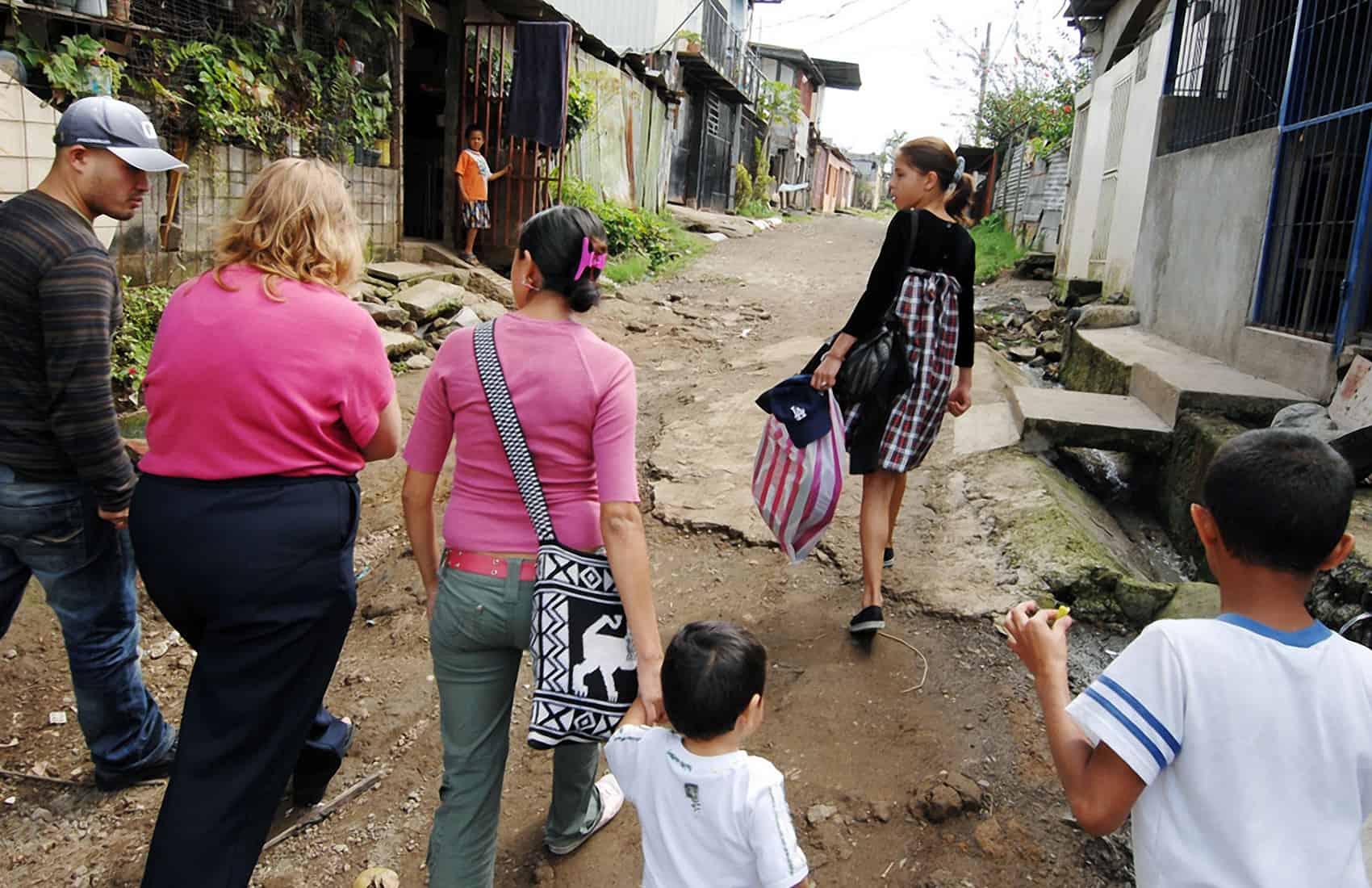An increase in the average income of the population reduced poverty levels by 1.2 percent in Costa Rica. That is one of the main findings of the 2016 National Household Survey conducted by the National Statistics and Census Institute (INEC).
INEC released survey results on Wednesday that showed 20.5 percent of Tico households live in poverty.
The figure represents an improvement from last year, when the survey found 21.7 percent of people were poor. It also is the lowest poverty figure recorded in the past seven years, INEC reported.
The change translates to 10,390 families who are no longer considered poor, raising the number of Costa Rican families above the poverty line from 307,270 households in last year’s survey to 317,660 this year.
Survey coordinator Annia Chaves said during the presentation of the results that INEC found an increased income, particularly among families living in rural areas. The average household income rose 2.4 percent in urban areas and 3.6 percent in rural areas.
INEC investigators attribute the decrease in poverty to two variables: a reduction in the country’s inflation rates and benefits granted by government subsidies.
Chaves said the increase is directly linked to government subsidies that increased by 14 percent and to income received from other sources such as remittances and pensions.
Among the total number of poor households, some 95,000 live in extreme poverty: 6.3 percent of the country’s households live, down from the 7.2 percent found in the 2015 report. The number of households in extreme poverty fell for the first time since 2010.
Income gap
INEC reported that the country’s high income inequality figures are virtually the same as those recorded in 2015.
The 20 percent of households with the highest income have a cumulative income share of 50.7 percent. The average monthly income in these households is ₡2,600,000 (approximately $4,650).
By contrast, the 20 percent of households with the lowest earnings represent only 3.9 percent of the income share, and an average monthly income of ₡201,500 ($360).
This means that the average income for the wealthiest households in Costa Rica is almost 13 times higher than that from households with the lowest income levels.
Reactions
President Luis Guillermo Solís attributed the decline in poverty levels found by INEC to the efforts of his administration as well as aid programs launched by public agencies during his term.
Following the release of the survey results, Solís posted a series of messages on his social media profiles highlighting facts and figures from the research.
Among others, Solís said that his administration so far has allocated ₡33 billion ($58 million) to the “Bridge to Development” aid program in assistance to poor families.
Costa Rica reduce la pobreza y alcanza índice más bajo en los últimos 7 años. Fuente: INEC pic.twitter.com/yblIuv59Zt
— Luis Guillermo Solís (@luisguillermosr) October 26, 2016
The Costa Rican Union of Private Sector Chambers and Associations said they agree with results of the survey.
Chamber President Franco Pacheco said in a statement that the positive data from INEC’s research are a direct result of coordinated work by government agencies, which has provided continuous support to education and promoted the creation of new jobs.
He noted, however, that in order to create new jobs in the private sector, the government needs to “further improve the business climate to attract investment, both domestic and foreign, and also improve efficiency in public spending.”
Methodology
INEC’s research determined the poverty threshold using values measured by two different indices: the poverty line index and the multi-dimensional poverty index.
The first one evaluates the relation between a household’s income and the cost of a set of basic goods, or canasta básica, established by the Economy Ministry.
The multi-dimensional poverty index takes into account 19 indicators distributed in five areas: education, housing, health, employment and access to social protection.
Evaluations from both indices resulted in Costa Rica’s poverty levels going down by 1.2 percent.







